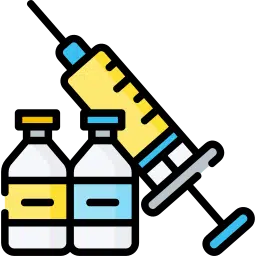Authors:
Laura E. Knockel, PharmD, BCACP
Sarah A. FitzPatrick, PharmD, BCACP
Reviewers:
Jordan Ballou, PharmD, BCACP
Hien Nguyen, PharmD, BCGP
Introduction
Respiratory syncytial virus (RSV) is a common respiratory virus that typically causes mild cold-like symptoms but has the potential to cause severe illness in children and older adults. Each year 60,000 to 160,000 adults aged 65 and older are hospitalized due to RSV, and 6,000 to 10,000 die.1 In comparison, influenza resulted in over 52,000 hospitalizations and 4,000 deaths in adults 65 and older during the 2021-22 season — RSV prevalence is much higher.2 In adults 60 and older, the incidence of RSV increases with advancing age, and certain comorbidities confer an increased risk for severe illness from RSV.3
In the United States, 97% of children are infected with RSV by 2 years of age. It is the leading cause of hospitalization for pneumonia and other lower respiratory tract infections in young children; 79% of children younger than 2 years hospitalized with RSV have no underlying medical conditions. Each year, 58,000 to 80,000 children younger than five years are hospitalized due to RSV infection.4 In comparison, an average of 20,000 children less than 5 years old are hospitalized due to influenza complications annually.5
The COVID-19 pandemic disrupted the timing of the typical RSV season which in the continental United States has been historically mid-October through early May.6 However, RSV seasonality is different in Alaska, Florida, Hawaii, Puerto Rico, the U.S. Virgin Islands, Guam, and other U.S.-affiliated Pacific Islands. RSV circulation was at a historic low during the 2020-21 season, while the 2021-22 season started earlier and continued longer than pre-pandemic seasons. It appears RSV season is slowly returning to pre-COVID-19 seasonality; in 2022-23, RSV season started later than the previous year but still a couple of months earlier than pre-pandemic norms.7

In 2023, two vaccines (Abrysvo and Arexvy) and a monoclonal antibody (Beyfortus) became available to help prevent lower respiratory tract disease (LRTD) associated with RSV. Here are ten things every clinician should know about the RSV vaccines.
 iForumRx.org is a web-based community of practice designed to inform ambulatory care pharmacy specialists, pharmacy residents, and student pharmacists about high-quality, practice-changing evidence.
iForumRx.org is a web-based community of practice designed to inform ambulatory care pharmacy specialists, pharmacy residents, and student pharmacists about high-quality, practice-changing evidence.
I was hoping there would have been a more detailed view of the studies , as there were very few infections and surprising the vaccine was approved based on such small numbers. I felt like the narrative of this presentation was high level CDC speak. Consumer beware
For Pfizer’s shot, FDA committee members voted only 7-4 to approve it -with one abstention that there is adequate data to support the vaccine’s safety and effectiveness. How on earth are you reporting that it was 90 % effective?! It was only 66.7% effective at preventing moderated lower respiratory tract illness with two or more symptoms in the first season!!!
Also don’t agree with herd immunity approach for LTC – when the ACIP guidelines clearly say to evaluate each patient based on individual risk factors for developing severe disease.
Thank you for your comments. The efficacy of the Pfizer vaccine (RSVpreF, Abrysvo) was reported as 88.9% against RSV-associated LRTD with three or more lower respiratory signs or symptoms lasting longer than one day in the first season, per Melgar et al (Reference 1, Table 3). We agree that efficacy was lower in the second season for both vaccines. It is too early to tell what long-term immunity will be – definitely something to continue to watch!
We did not discuss herd immunity in this commentary and agree that each patient should be evaluated based on individual risk factors, with one of the risk factors for severe RSV disease being persons who reside in nursing homes or other long-term care facilities (Reference 1).